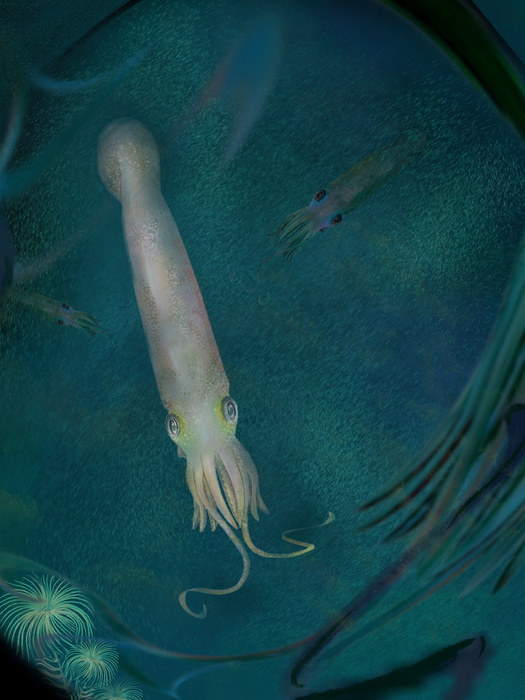Collaborative research conducted by the American Museum of Natural History and Yale University, reveals a new species of Vampyropoda, with 10 arms rather than the eight the species was previously thought to possess.
What are Vampyropods?
“This is the first and only known Vampyropod to possess 10 functional appendages,” explained lead author Christopher Whalen, a postdoctoral researcher in the Museum’s Division of Palaeontology, and a National Science Foundation postdoctoral fellow in Yale’s Department of Earth & Planetary Sciences.
Vampyropods are soft-bodied cephalopods that are typically characterised by eight arms and an internalised chitinous shell or fin supports. Because they lack hard structures, Vampyropoda are not well represented in the fossil record.
This new study is based on an exceptionally well-preserved Vampyropod fossil from the collections of the Royal Ontario Museum (ROM), which was originally discovered in what is now Montana and was donated to ROM in 1988.
What does the discovery of this new species reveal?
Whalen and co-author Neil Landman, curator in the Museum’s Division of Palaeontology, identified the fossil specimen as a completely new genus and species that dated to about 328 million years old, thus making it the oldest known Vampyropod, and extending the fossil record of the group by about 82 million years.
Additionally, they also describe its 10 arms—all with preserved suckers—corroborating previous scientific arguments that the common ancestor of Vampyropods also had 10 arms.
Whalen added: “The arm count is one of the defining characteristics separating the 10-armed squid and cuttlefish line (Decabrachia) from the eight-armed octopus and vampire squid line (Vampyropoda).
“We have long understood that octopuses achieve the eight-arm count through elimination of the two filaments of vampire squid, and that these filaments are vestigial arms. However, all previously reported fossil Vampyropods preserving the appendages only have eight arms, so this fossil is arguably the first confirmation of the idea that all cephalopods ancestrally possessed 10 arms.”
Two of the cephalopod’s arms appear to have been elongated relative to the other eight arms, and its torpedo-shaped body is reminiscent of today’s squids. The fossil was given the name Syllipsimopodi bideni.
Why was the new species named Syllipsimopodi bideni?
The genus name is derived from the Greek word ‘syllípsimos’ for ‘prehensile’ and ‘pódi’ for ‘foot’—because this is the oldest known cephalopod to develop suckers, allowing the arms, which are modifications of the molluscan foot, to better grasp prey and other objects.
The species name is to honour the recently inaugurated (at the time of paper submission) 46th President of the United States, Joseph R. Biden.
“Syllipsimopodi may have filled a niche more similar to extant squids, a midlevel aquatic predator,” noted Landman. “It is not inconceivable that it might have used its sucker-laden arms to pry small ammonoids out of their shells or ventured more inshore to prey on brachiopods, bivalves, or other shelled marine animals.”
Based on the age, characters, and phylogenetic position, the fossil challenges the predominant arguments for Vampyropod origins, and the authors propose a new model for coleoid (internally shelled cephalopod) evolution.
The details are published today in the journal Nature Communications.
To keep up to date with our content, subscribe for updates on our digital publication and newsletter.





